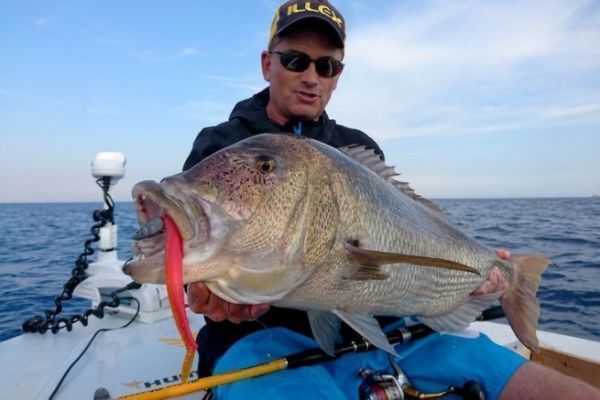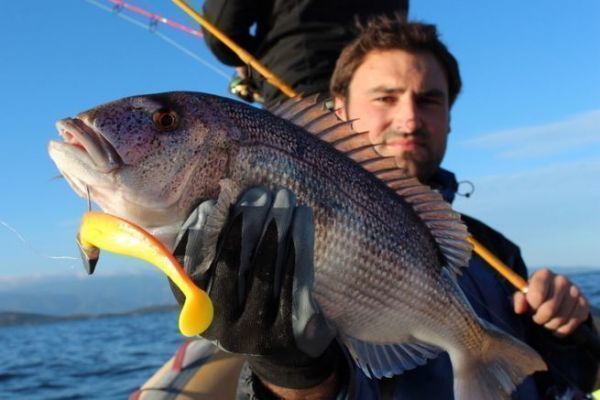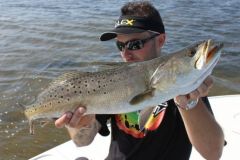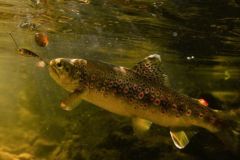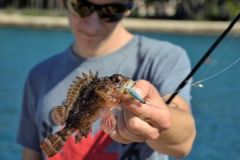A few words about denti
The denti is a sparid fish, like the sea bream, the pike-perch or the bream. Its body is tall, its flanks compressed and its jaw extremely powerful. In fact, it's its dentition and sharp teeth that have earned it the name denti or toothed. The denti is a predator that often evolves less than 10 m from the bottom, and is commonly found at depths of between 15 and 150 m. It's a real hunter that loves rock fish and other cephalopods... This is rare enough to be highlighted, as many sparids are rather omnivorous, feeding on shellfish, sea urchins, worms, etc. at the bottom.
The denti is easily recognized; its scales above the lateral line are bluish or purplish, its belly is light, its massive head has pink, blue and violet highlights. Its eye is orange-red.
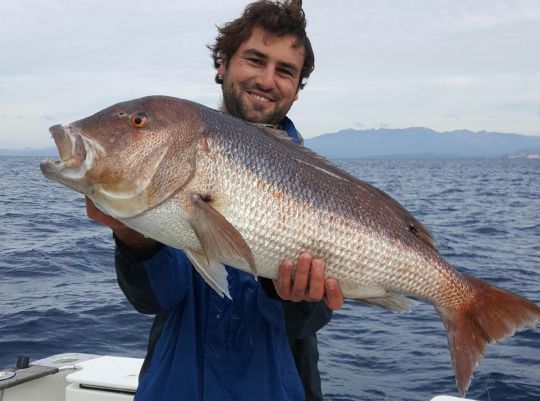
Denti fishing
Denti are very popular with boat anglers because they're so easy to catch! Most anglers fish with fireballs or slow trolling (donwrigger), and frankly, anyone can catch a 30-year-old denti weighing 7 kg...
Some anglers even consider (wrongly) that it's impossible to catch dentex with a soft lure... This is completely untrue, and lure fishing remains finer and more technical, giving this majestic predator a chance.
The first dentex caught with lures were caught with metal jigs. Although this type of fishing proved to be both sporty and fun, it was rare to catch large fish (over 5 kg). The arrival in France of Japanese lures such as madaï and inchiku have further democratized lure fishing for denti in the Mediterranean, but it's definitely the soft lures that prove the most consistent and select the best subjects.
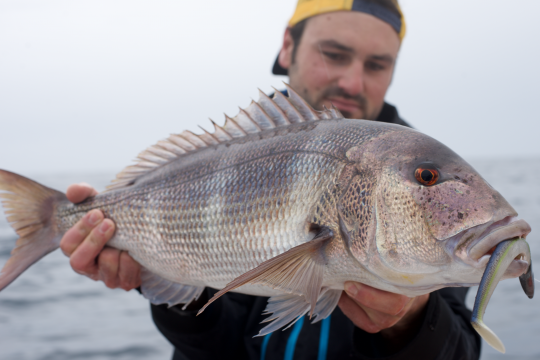
The choice of shads for denti fishing
The shads most commonly used for denti are 120 to 180 mm in size. In some cases, elongated lures are more catching and fine lures up to 250 mm can be used.
All shads work! Lures that are too fragile should be avoided, as they quickly get pulverized. A shad with firm material can withstand several attacks, which is a real plus when you miss a bite and hope the fish will attack your lure again, as long as it's still fishable and not missing its tail...
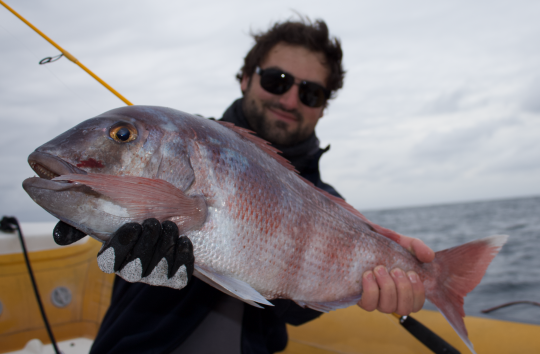
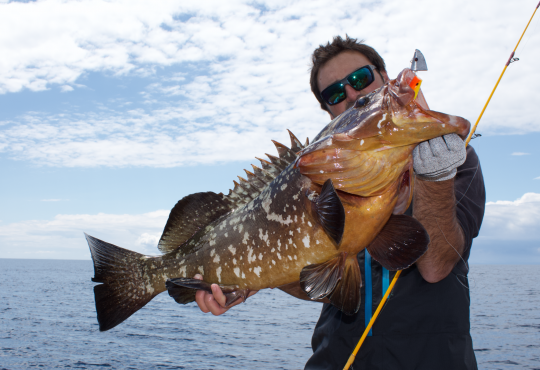
Arming shads
You'll need to adapt your tackle and lead head to your lure. In boats, to fish depths from 20 to 60 m, use lead heads from 35 to 75 grams. Beyond this range, fishing with soft lures is tedious and imprecise. The hook must be strong iron to resist the denti's hard, powerful jaws and ultra-sharp point. Don't forget to rinse your lures at the end of each session to maintain the sharpness of the hooks, which quickly oxidize. Whether or not to use a Texan rig is up to the angler. Frankly, we didn't notice any noticeable difference between Texan and conventional rigs.
The blue and orange colors are classics. The former evokes a sardine, highly prized by marine predators. Orange or "perch" colors will make you think of a girelle or a serran. Green shades reminiscent of garfish are excellent in summer on slim shads.
The most commonly used lead heads are "pisciforms" in the shape of fish heads. In addition to realism, they improve hydrodynamics, swimming and animation amplitude. Whichever model of jighead or hook you use, be sure to rinse them after each session and sharpen them to maintain a perfect bite.
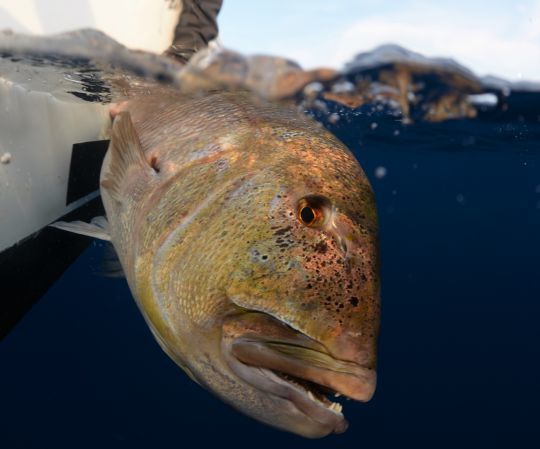
A tube of super glue is an essential accessory. You'll need to glue the lead head securely to the lure otherwise, during animation, the lure will have the unfortunate tendency to come loose from the lead head. The animations are indeed rather violent and fast... We'll talk about this in the following article.

